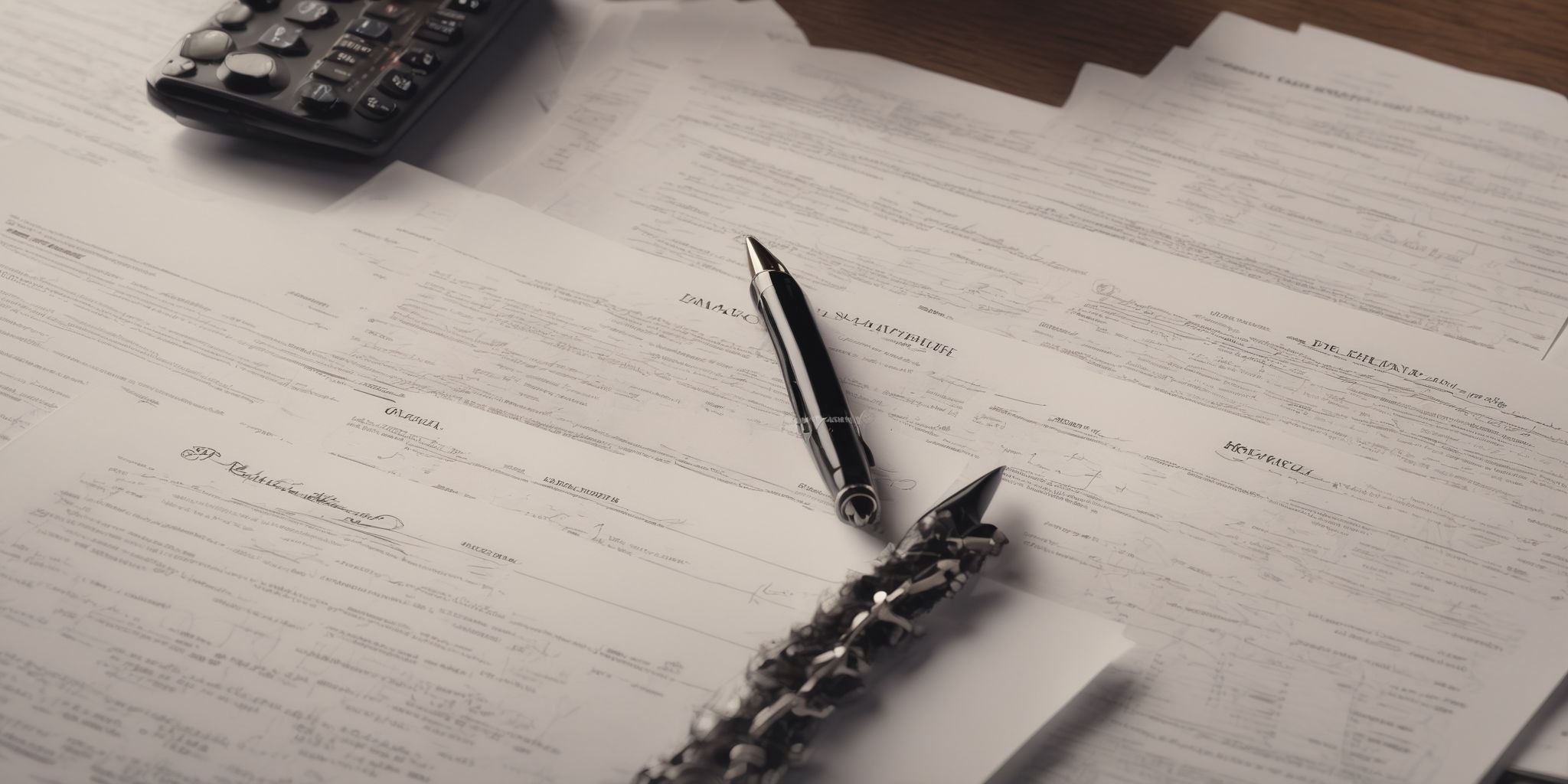How to budget for beginners
Do you feel lost tracking your money each month? Want to save more and take charge of your finances? Creating a personal budget could help.
Track your income, list expenses, and set achievable goals. By following these steps, you can budget effectively.
Let's break it down and make budgeting easy for you.
Understanding the Basics of Budgeting
Defining Budgeting
Budgeting is creating a financial plan to track income and expenses. It gives control over finances, helping save money, pay debts, and reach financial goals.
Individuals can manage finances better by budgeting to meet needs, wants, and savings. It involves tracking income, categorizing expenses, setting goals, and monitoring spending habits. Budgeting helps prioritize expenses, avoid overspending, and plan for emergencies, savings, and debt repayment.
A budget categorizes income, expenses, and savings as needs, wants, and savings. Following a plan with spending limits, tracking daily spending, and following the 50/30/20 rule helps. Budgeting tools like a budget planner or mobile banking aid in monitoring finances, adjusting spending, and staying within limits. Setting a zero-based budget ensures every dollar has a purpose, whether giving, saving, or repaying debt, leading to financial control and stability.
Importance of Budgeting for Beginners
Budgeting for beginners has many benefits.
It helps individuals understand their income and expenses better, avoiding overspending and staying on track with financial goals.
By making a monthly budget, beginners can plan and allocate money for different categories like needs, wants, and savings. This helps them control their finances and work towards goals effectively.
Budgeting also helps beginners identify and improve spending habits, leading to better money management in the long run.
Setting realistic goals and following a budget fosters financial discipline and responsibility, ensuring a more secure financial future.
Creating Your First Budget
Calculating Your Income
When calculating your income for budgeting, include all sources like regular pay, self-employment, side hustles, government payments, and investments. This gives a full view of your finances.
For irregular income, use past earnings to estimate an average amount. Track income fluctuations to better represent your total income for budgeting. This way, even irregular income is included in your budget.
Identifying Your Expenses
Creating a budget involves considering common expenses like housing, groceries, transportation, health care, insurance, child care, entertainment, personal care services, clothing, debt payments, and savings.
By categorizing these expenses as needs, wants, and savings, individuals gain insight into their spending habits and allocate funds effectively.
To track expenses accurately, individuals can use tools like spreadsheets or apps to monitor daily spending. Reviewing bank and credit card statements, bills, and receipts helps identify and group expenses into fixed and variable categories.
Detailed tracking helps understand spending patterns and areas of overspending, leading to informed financial decisions.
Setting Savings Goals
Setting savings goals in a budget is important. It helps individuals allocate funds consistently toward financial objectives. By having clear goals, people can prioritize saving for emergencies, retirement, debt repayment, or other financial needs. This allows for better control over finances and prevents overspending.
Personalizing savings goals means tailoring them to specific needs and desires. Whether it's building an emergency fund, saving for a dream vacation, or planning for retirement, aligning goals with financial objectives keeps individuals motivated to stick to the budget and achieve long-term goals.
Strategies like creating a separate budget category for savings, automating deposits into a savings account, or using a budgeting tool to track progress help in allocating funds for savings consistently. By staying disciplined, regularly reviewing the budget, and ensuring they are on track, individuals can effectively reach savings goals and improve their financial health.
Allocating Funds in a Personalized Budget
Categorizing expenses into needs and wants helps prioritize essential expenses like housing, utilities, and groceries over discretionary spending like entertainment.
Setting specific financial goals, such as building an emergency fund or paying off debt, is important to achieve savings objectives within a personalized budget.
Using tools like budgeting apps or spreadsheets can help track daily spending and ensure adherence to spending limits.
Following a zero-based budget approach, where every dollar is allocated to a specific purpose, gives individuals better control over their finances to focus on meeting their money goals.
Implementing the 50/30/20 rule, which divides income into needs, wants, and savings categories, can further guide individuals in prioritizing expenses and achieving financial stability.
Implementing Your Budget
Using Mobile Banking for Budget Tracking
Mobile banking is a helpful tool for tracking your budget. Users can monitor income, expenses, and financial goals easily in one place.
Features include categorizing expenses, setting spending limits, and insights into spending habits.
With the convenience of mobile banking, you can track daily spending, set realistic goals, and adjust your budget as needed.
Mobile banking can also assist in maintaining a zero-based budget, ensuring every dollar has a purpose from emergency funds to savings accounts.
By using mobile banking for budgeting, individuals can control finances and work towards financial goals effectively.
Following a Step-by-Step Approach
Taking a step-by-step approach can really help beginners with budgeting. It provides a clear way to manage finances effectively. Breaking down the process into steps makes it easier to track income, categorize expenses, set goals, and make a plan.
This method helps create an organized budget that suits their needs. When making a budget, beginners should focus on needs, wants, and savings. Following the 50/30/20 rule allocates funds to various categories, such as necessities like housing and groceries, wants like entertainment, and savings for emergencies or debts.
For beginners to stay on track, tracking daily spending and reviewing the budget regularly are important. Budgeting tools like mobile apps can help monitor expenses and identify overspending. Developing good habits like curbing impulse buys and sticking to a zero-based budget can keep beginners focused on their goals.
Adjusting Your Budget Over Time
Tracking Income and Expenses Regularly
To track income and expenses effectively and stick to a budget, follow these steps:
- Calculate total monthly income from all sources.
- Include paychecks, self-employment earnings, and any additional income.
- Categorize monthly expenses into budget categories like housing, health, food, transportation, and entertainment.
- Set realistic financial goals.
- Follow the 50/30/20 budgeting rule:
- Allocate 50% to needs.
- Allocate 30% to wants.
- Allocate 20% to savings.
- Use zero-based budgeting:
- Ensure every dollar has a job.
- Control spending and prioritize financial goals.
- Utilize budgeting tools like apps or spreadsheets.
- Track daily spending habits and stick to set spending limits.
- Review the budget regularly and make adjustments as needed.
- Automate savings by setting aside a portion of each paycheck.
- Ensure progress towards financial goals like building an emergency fund or paying off debt.
- Stay diligent with monitoring income and expenses to maintain financial control.
- Avoid overspending and work towards desired financial outcomes.
Subtracting Expenses From Income
Creating a budget:
- Identify all sources of income.
- Categorize income sources.
- List monthly expenses.
- Group expenses into fixed and variable categories.
- Subtract total expenses from total income.
- Determine remaining funds for the month.
- Align budget with financial goals.
- Avoid common mistakes:
- Overlooking irregular income.
- Underestimating variable expenses.
- Forgetting savings and debt repayment.
- Review spending habits and set realistic goals.
- Adjust budget categories if needed.
- Use zero-based budgeting approach.
- Ensure every dollar has a purpose.
- Balance the budget throughout the month.
- Use budgeting tools.
- Track daily spending.
- Implement spending limits.
- Manage finances effectively.
- Prevent overspending.
- Follow the 50/30/20 rule for budgeting.
Challenges of Budgeting for Beginners
Dealing With Unexpected Expenses
To effectively prepare for unexpected expenses in their budget, individuals can take the following steps:
- Set aside a portion of their income each month for emergencies, creating an emergency fund.
- Include this category in their budget plan to cover unforeseen costs without disrupting overall financial goals.
- Implement a zero-based budgeting approach to prioritize spending and allocate any surplus funds towards an emergency fund or other savings goals.
Strategies to handle unexpected expenses without derailing the budget plan:
- Track daily spending to identify areas for cuts if needed.
- Set realistic spending limits for each budget category.
- Regularly review and adjust the budget as necessary to stay on top of finances.
By having a clear plan in place and managing finances effectively, individuals can navigate unexpected expenses while maintaining financial stability.
Resources to help manage unexpected expenses:
- Utilize budgeting apps like the Spending & Budgeting tool in Online and Mobile Banking to automate categorizing transactions and track spending patterns.
- Seek guidance from financial planners or online resources for creating a personalized budget, setting financial goals, and establishing an emergency fund. This can assist in better managing finances and preparing for unforeseen circumstances.
Sticking to a New Budget
To stick to a new budget, follow these steps:
- Calculate total monthly income from all sources.
- Categorize monthly expenses into fixed and variable categories.
- Set realistic goals and divide income into needs, wants, and savings using the 50/30/20 rule.
- Track daily spending and make adjustments as needed.
- Use budgeting tools and automate savings for a structured approach to managing finances.
- Implement zero-based budgeting where every dollar has a purpose.
- Regularly review the budget and make changes as circumstances evolve to maintain financial control.
- These steps and strategies help establish good financial habits and achieve money goals over time.
Advanced Budgeting Strategies for Confidence
Refining Personal Finance Goals
To refine and clarify personal finance goals, it's important to create a detailed budget. This budget should outline fixed expenses, variable expenses, and savings goals.
By categorizing income sources and expenses into a budget plan, individuals can clearly see their earnings and where their money goes each month.
Setting specific financial milestones, like building an emergency fund or paying off debt, gives targets to work towards.
Using a budgeting tool, such as a budget planner or a mobile banking app, helps track daily spending and stick to preset limits.
Consider the 50/30/20 rule: allocate 50% of income to needs, 30% to wants, and 20% to savings.
With zero-based budgeting, every dollar is assigned to specific financial goals, giving more control and preventing overspending.
Remember to review and adjust spending habits to match long-term financial goals and priorities.
Exploring the 50/30/20 Budget Method
The 50/30/20 Budget Method splits your income into three categories with specific percentages:
- 50% for needs
- 30% for wants
- 20% for savings or debt payments.
This method simplifies tracking spending and gives a clear budgeting structure.
To get started, calculate total monthly income from different sources. Then, categorize monthly expenses into fixed and variable costs.
Set realistic financial goals for short-term and long-term objectives.
Use zero-based budgeting, where every dollar has a purpose, to manage money effectively.
Track transactions consistently, make adjustments as needed, and use budgeting tools to monitor expenses and savings.
Understanding income and expenses helps make informed decisions to achieve financial goals and maintain stability.
Improving Your Financial Habits
Analyzing and Adjusting Spending Habits
To analyze spending habits, start by tracking and categorizing expenses. Identify areas where the most money is spent by listing fixed expenses (like rent) and variable expenses (such as groceries).
Understanding monthly expenses helps pinpoint where adjustments can be made to align spending with financial goals.
To adjust spending habits, set realistic goals for short and long-term objectives. Short-term goals (like building an emergency fund) can be achieved in 1-3 years, while long-term goals (such as retirement savings) may take decades.
Create a plan based on these goals and set specific spending limits for each expense category to direct money towards priorities.
Track and evaluate spending adjustments regularly by reviewing the budget. Compare actual spending to the budget to stay on track, and make adjustments if overspending occurs.
Cut back on unnecessary expenses or find additional income sources as needed. Tracking daily expenses will help maintain financial control and work towards financial goals.
Utilizing Budgeting Tools for Better Money Management
Budgeting tools can make tracking income and expenses easier. These tools include budget spreadsheets, online templates, and budgeting apps. They allow individuals to categorize expenses, create budget categories, and monitor spending patterns each month. This helps in managing finances better and reaching financial goals by ensuring that every dollar has a specific purpose in the budget.
With budgeting tools, individuals can track expenses accurately and stay within budget limits. By entering daily spending and categorizing expenses, these tools show a visual representation of where money is being spent. This makes it simpler to pinpoint areas of overspending, allowing adjustments to be made in real-time. This keeps individuals on budget and away from financial troubles.
To improve financial habits effectively with budgeting tools, individuals should set specific and realistic financial goals like creating an emergency fund or paying off debt. By categorizing expenses as wants and needs, individuals can prioritize spending and set limits in each budget category. This promotes thoughtful spending, aids in creating a zero-based budget, and helps in overall financial management. By consistently using budgeting tools and tracking daily spending, individuals can develop better financial habits and work toward achieving their financial goals.
Budgeting Tips for Those with Low Income
Making Every Dollar Count
Individuals can better manage their money by dividing expenses into needs and wants. This way, they can focus on covering important costs like housing, utilities, and transportation first. Allocating a smaller amount for entertainment and dining out ensures essential expenses are prioritized.
Creating a separate category for emergencies and saving for unexpected costs is also wise. This emergency fund acts as a safety net for unforeseen expenses.
In addition to categorizing expenses, individuals should set practical financial goals. These goals can be short-term like building an emergency fund or long-term like saving for retirement. Aligning spending with these objectives helps in budgeting effectively.
Tools like budget planners or mobile banking apps can be useful in tracking expenses and progress towards financial goals. By reviewing spending habits regularly, individuals can identify overspending and adjust their budget accordingly.
Establishing spending limits in different categories and adhering to a zero-based budgeting approach can help in controlling expenses. This method ensures every dollar is assigned a purpose, encouraging efficient money management.
FAQ
What is the first step in creating a budget for beginners?
The first step in creating a budget for beginners is to track your expenses for a month to understand where your money is going. This will help you identify areas where you can cut back and start creating a budget based on your spending habits.
How can beginners track their expenses to create an accurate budget?
Beginners can track expenses by using mobile apps like Mint or personal finance software like YNAB. They can also keep a spreadsheet or notebook to manually record expenses. Categorize expenses to easily identify patterns and create a budget based on this data.
What are some common budgeting mistakes that beginners should avoid?
Some common budgeting mistakes beginners should avoid include not tracking expenses, not setting realistic goals, and not creating an emergency fund. It's important to monitor spending, establish attainable financial objectives, and prioritize savings for unforeseen circumstances.
Are there any tools or apps that can help beginners with budgeting?
Yes, there are several tools and apps that can help beginners with budgeting, such as Mint, YNAB (You Need a Budget), and EveryDollar. These tools can track expenses, set financial goals, and create budgets to help users manage their finances effectively.
How can beginners adjust their budget if they overspend in a certain category?
Beginners can adjust their budget by reallocating funds from other categories, finding cheaper alternatives, or cutting back on non-essential expenses. For example, they can limit eating out to reduce spending on dining or cancel unused subscriptions to free up more money for the overspent category.


